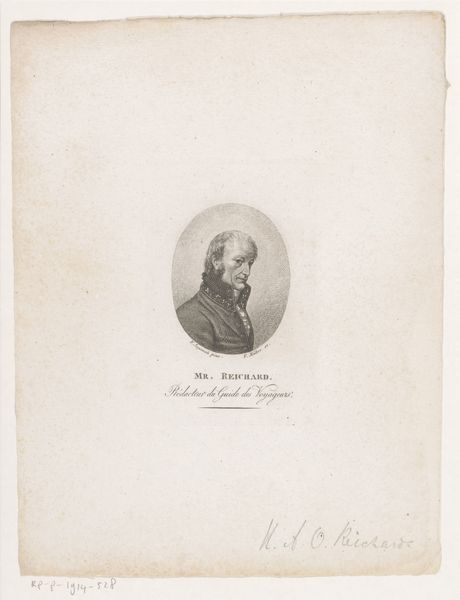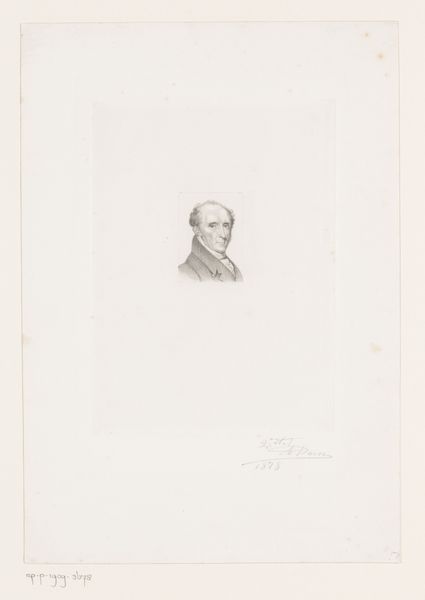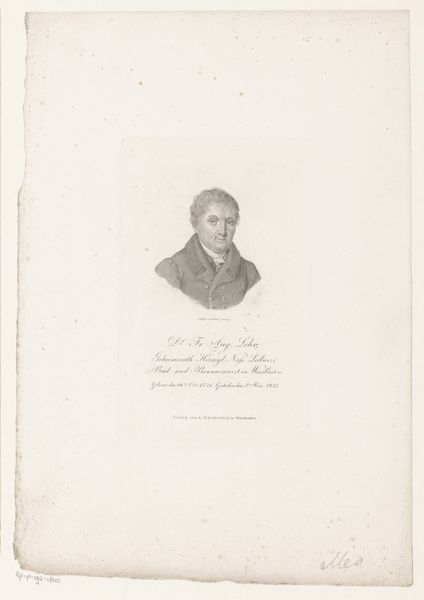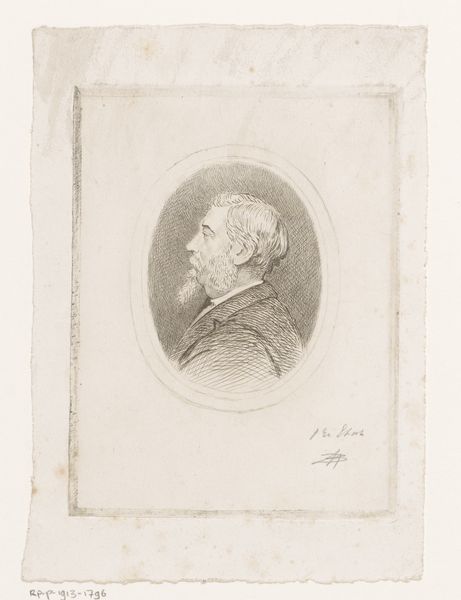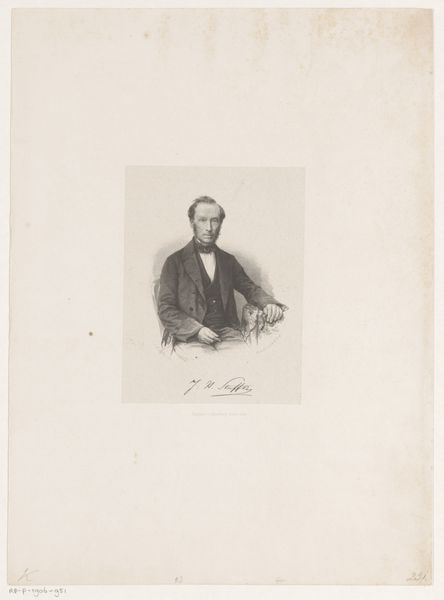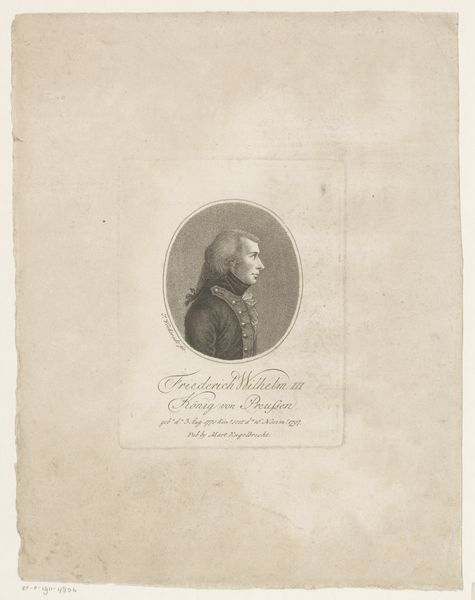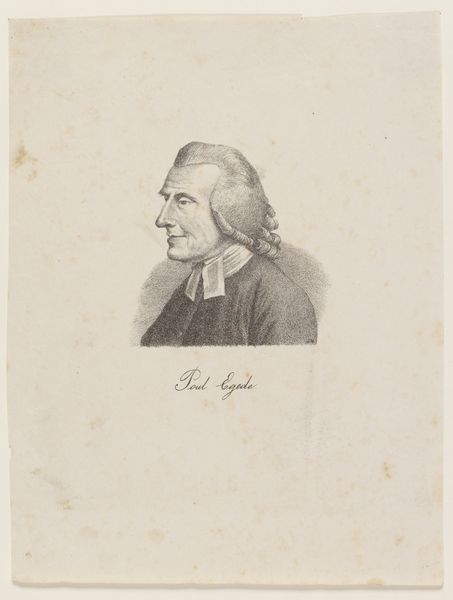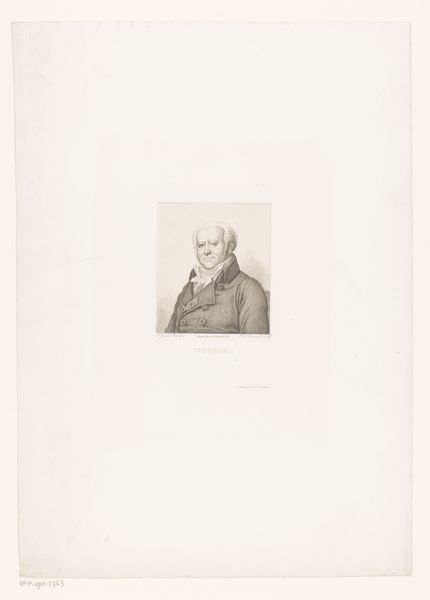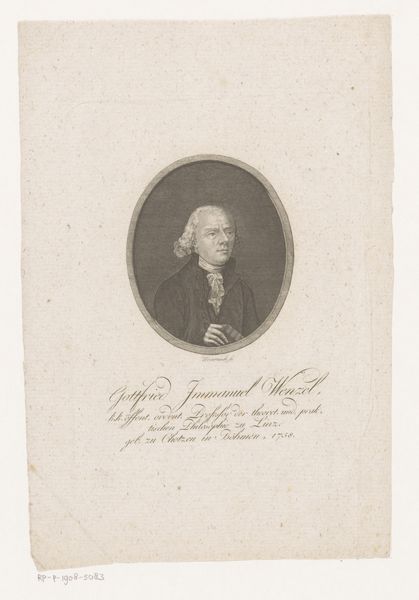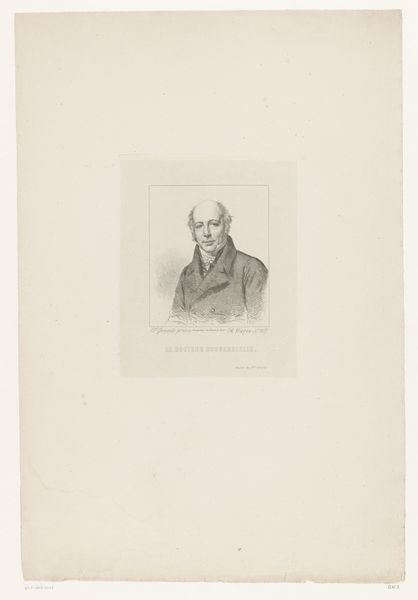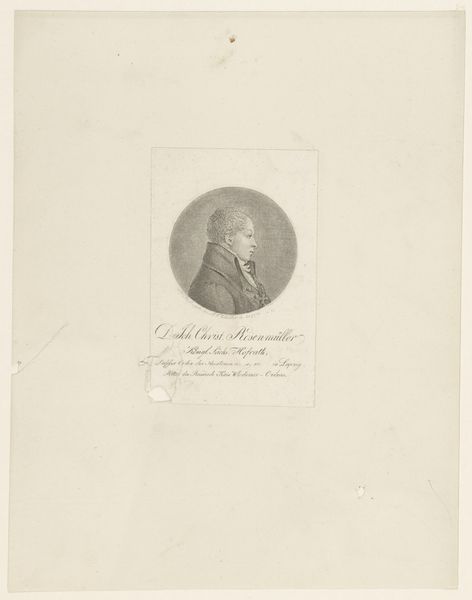
engraving
#
portrait
#
pencil drawn
#
neoclacissism
#
engraving
#
realism
Dimensions: height 161 mm, width 119 mm
Copyright: Rijks Museum: Open Domain
Editor: Here we have a 19th-century engraving, a portrait of James Watt, made by A. Zschokke. What strikes me is the subject's gaze, direct and… determined. How would you interpret this image? Curator: Indeed, the direct gaze is powerful, acting almost as an invitation but also a challenge, inviting us to witness. But the image goes further than pure representation. What symbols do you recognize within this depiction? Editor: I see neoclassical elements, certainly in the overall composition, but I don't detect any symbolic objects here. Curator: Consider his dress and demeanor, what era do they invoke? Is he presenting as simply a man? Look closely, what about the context of his innovations during that time? Editor: I see your point. It's the clothes of a respectable gentleman of science. I think it subtly suggests enlightenment thinking. It conveys this new intellectual power. Would that be the symbolic connection you mean? Curator: Precisely. Watt, as a figure, came to symbolize human innovation and the power of reason, and that gaze broadcasts a knowing, a confidence in progress. We're looking at more than a portrait, we're viewing an emblem of an age. But how has time affected how we see him, and progress? Editor: So, this portrait isn't just a likeness, but a kind of statement about an era. It makes me wonder about the burden of progress too, something perhaps hinted at but overlooked in that determined gaze today. Thank you. Curator: My pleasure. Understanding how portraits participate in larger narratives reveals how art functions as a reflection of culture and societal values.
Comments
No comments
Be the first to comment and join the conversation on the ultimate creative platform.
